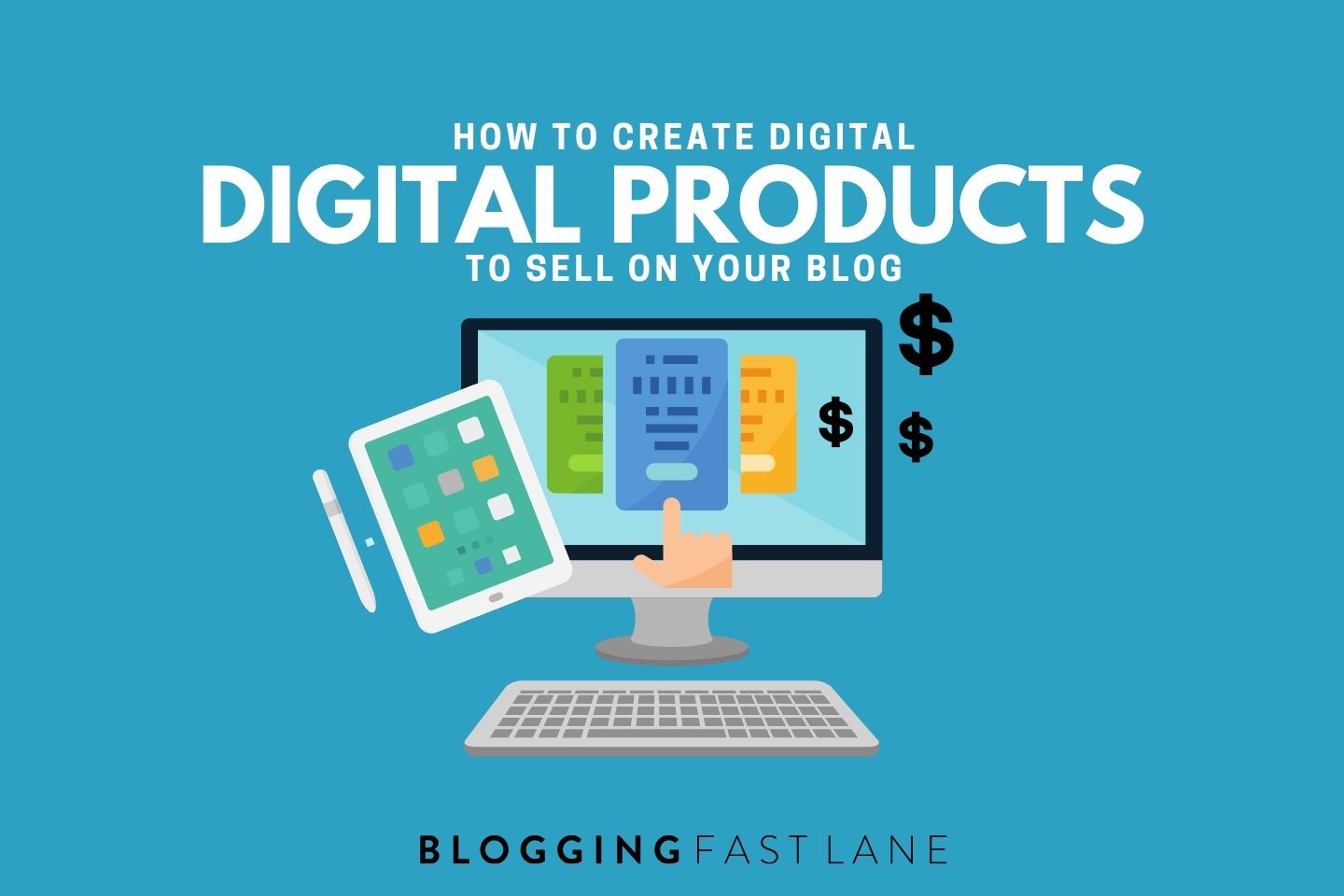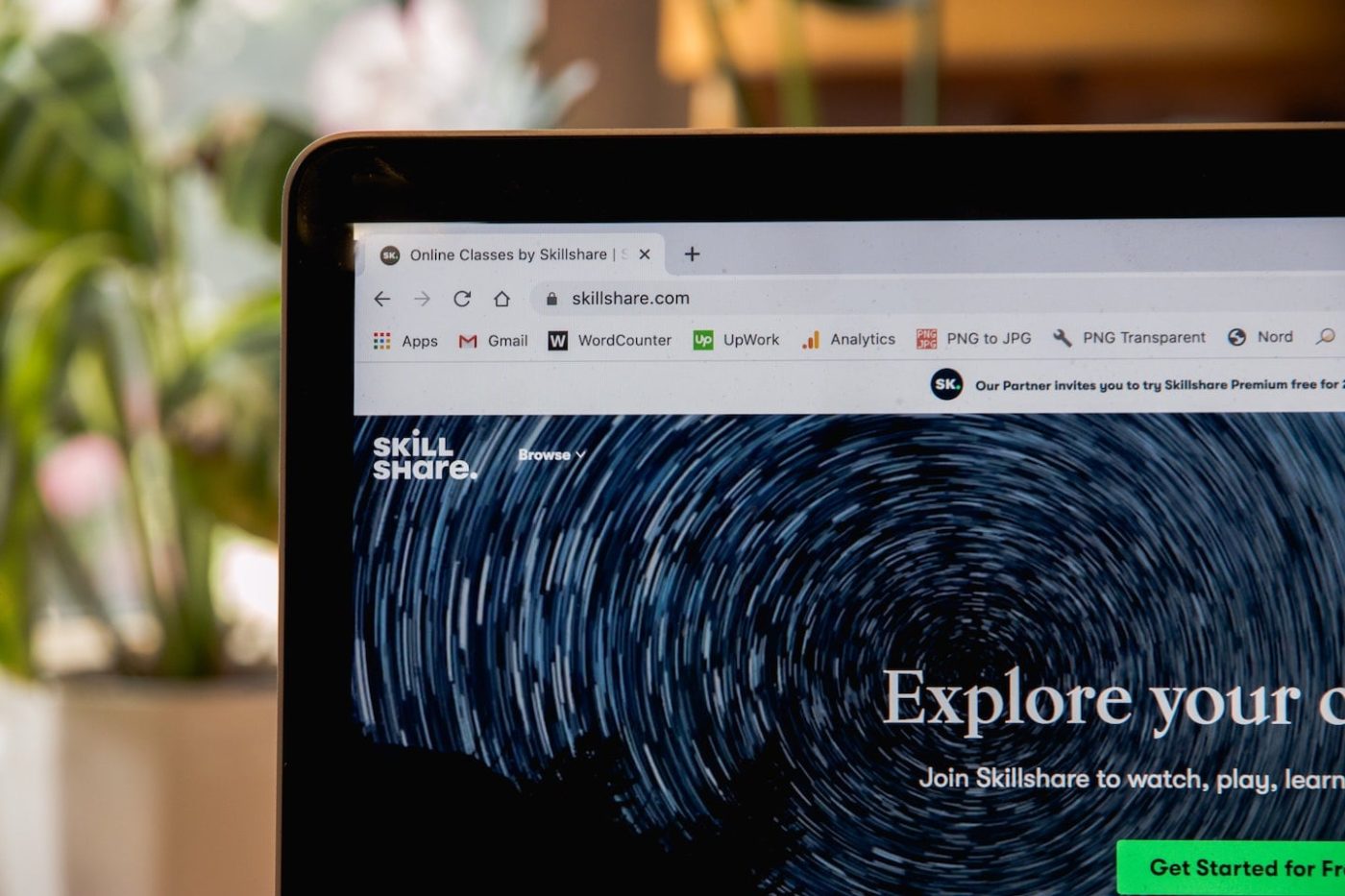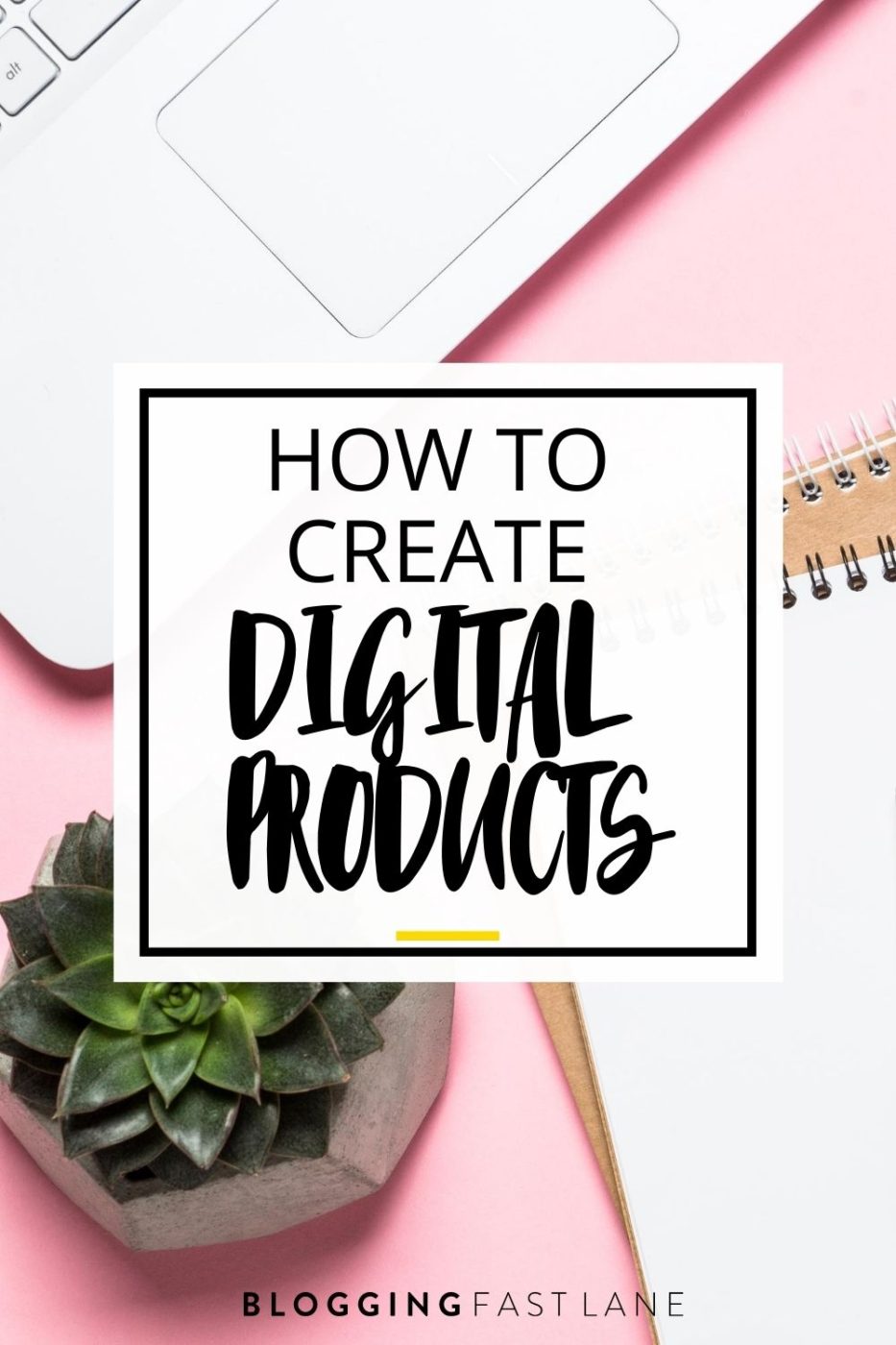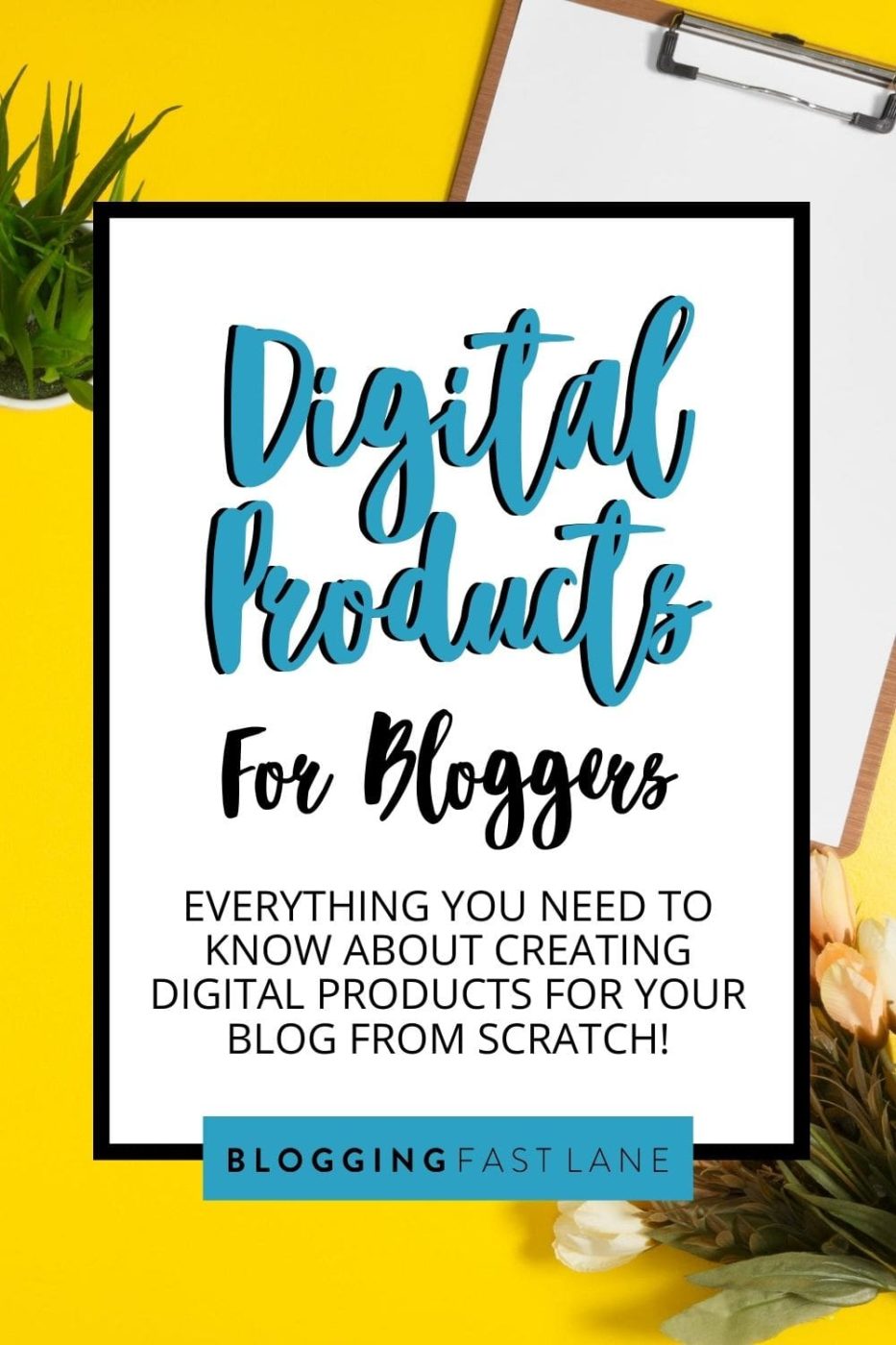This article may contain affiliate / compensated links. For full information, please see our disclaimer here.

If you’ve made it to this article, you must be wondering how to create digital products… and rightfully so! As a blogger, digital products are an incredible market to tap into.
Digital product creation can be especially powerful for bloggers looking to monetize their blogs in different ways. It’s a great source of passive income, limitless earnings, and a huge amount of untapped potential.
Digital products are a great way to diversifying your blogging income streams, WHILE continuing to provide value to your audience.
Take our case, for example: although digital products make up just a fraction of our overall business (less than 12%), we’ve earned over $14,000 from our line of ebooks, which we only spent a couple of weeks creating.

Interested in learning how to create digital products? Keep reading to find out everything you need to know including our top tips on how to create, validate, and market a digital product!
- Why Bloggers Should Create Digital Products
- Popular Types of Digital Products
- 4 Steps to Create Digital Products For Your Blog
- Step #1: Brainstorm Product Ideas
- Step #2: Validate Your Product Idea
- Step #3: Create the Actual Product
- Step #4: Market and Sell the Product
- Recommended Tools for Selling Your Digital Product
- Next Steps…
Why Bloggers Should Create Digital Products
If you’re a blogger and have previously toyed with the idea of creating a digital product, this section is for you.
Digital products are a total win for bloggers and something that you must absolutely consider when planning to diversify your income. No matter what niche your blog is in, you can bet that there’s a digital product that will appeal to your readers.
The thing that makes digital products so amazing is they tap into a resource that you already have: your knowledge and expertise!
It is a win-win situation because you are able to provide value to your readers by creating an incredible product that can help them while also creating a brand new revenue stream for yourself.
The best part is that digital products are typically pretty low on the cost front (remember, you’re the prime resource here). Even better, once these digital products are made, you already have a direct channel to sell and market them… through your blog!
While it certainly takes some time to figure out how to market and sell it the first time, after the initial product creation, everything else you make is all profits. Your earning potential is also pretty much unlimited as you’re able to use your blog as the main marketing engine.
This means that as your blog continues to grow, you’ll also have more people to market and sell your product to.
Now that we’ve covered why bloggers should get on the digital product train, in the section below, I will be walking you through the types of digital products that you can create as well as our 4-step process on how to brainstorm, validate, create, and market a digital product.

Popular Types of Digital Products
Digital products are practically infinite, with endless possibilities to choose from. That being said, in the blogosphere, there are certain digital products that are popular and mesh well with blogging in general.
Here’s a breakdown of some of the most common digital products for bloggers and examples of what you can do with them!
When trying to brainstorm for different digital product ideas, the main question we ask ourselves is: “What problem can my product solve for my readers?”
Ebooks
When our travel blog, Adventure in You, began to gain traction, my partner Tom and I started to get email after email from our readers asking various questions about our travels in Thailand.
- “What island in Thailand is best?”
- “Where should we stay in Chiang Mai?”
- “How do you travel around the country?”
With these emails coming in more and more frequently, Tom began to joke about writing a guidebook.
Long story short, after playing around with the idea and doing some research online on how to effectively create and sell a digital product, I sat down and came up with a first draft.
Fast forward 3 years and we’ve made 5 Southeast Asia guidebooks which steadily bring in anything from $400 to $500 per month… on autopilot!

Since we had spent years traveling all over Southeast Asia, we knew we had the knowledge that our target audience was looking for. Unlike big guidebooks like Lonely Planet, we decided to create ours in a magazine-style listicle with tons of personal tips and advice.
The ebook totally served its purpose which was to help our readers have the best experiences while traveling Asia, while at the same time, providing us with another income stream.
Ebooks are a super popular digital product, and with good reason. They take pretty minimal effort to put together and then can be sold for years to come. Plus, they work well for any niche as there’s always information to sell!
Here are a few examples of great ebook titles that would work in different niches:
- Gardening Blog → A Step-by-Step Guide to Building a Tropical Backyard Garden
- Fashion Blog → How to Create a Minimalist Capsule Wardrobe
- Mom Blog → 100 Rainy Day Activities for Kids
- Food Blog → A No-Fuss Guide to Meal Prepping
- Home Improvement Blog → Tackling Storage: Hacks to Make the Most of Your Cabinet Space
- Campervan Blog → Van DIY: From Drab to Fab
Top Tip for Creating an Ebook: Once you write a solid draft of your ebook, head over to Canva to start putting it together visually. Using Canva Pro is next level when it comes to creating ebooks as there are so many templates to choose from. You can even mix and match to get a layout that’s just right! Even if design isn’t your strong suit, Canva makes it so easy to create a professional-looking ebook that’s sure to impress your readers.
Templates
Premade templates are another really popular digital product for bloggers. Rather than an entire ebook, templates tend to be much shorter but pack a punch in terms of the value they deliver.
Let’s be honest here… how many times have you made a resume from scratch? Chances are, you used a template from someone who knows the key components a resume needs to include and has some design experience to make it look nice. That way, when it gets to us, the users, we can easily fill in our information and be on our way.
That’s the value of templates, and when your template is valuable enough, people will pay you for it!
With decent design skills (or you can opt to outsource) and the answer to your users’ problems, templates are a fantastic way to earn some dough.
Some template ideas may include:
- Financial Blog → Budget templates including a savings chart and a debt planner.
- Food Blog → Meal planner template with monthly grocery lists and recipes
- Mom Blog → Weekly planner template including chore charts for the kids.
- Fitness Blog → Workout plan template which has workouts and measurement tracking
- Self Improvement Blog → Gratitude journal template that includes writing prompts and visioning goals
While this is just scratching the surface of the kinds of templates bloggers can create, the possibilities are pretty much endless here.
And the best part about templates is that they’re one of the most low-cost digital products you can create. In fact, for many of them, it doesn’t take more than some sort of writing or design software and a problem-solving idea.
So, what can you create that will make your readers’ lives easier?

Email Courses
Another great idea for digital products are email courses.
An email course is basically a series of automated emails sent out to subscribers over a period of time that provide value and teach something surrounding a specific topic.
Rather than a full-blown course, an email course is more bite-sized and digestible for readers while still delivering useful information.
While email marketing (newsletters, discounts, new articles, etc) is typically free to those on a blogger’s email list, an email course is a way to create an air of exclusivity.
Maybe there’s a topic that readers keep on bringing up. Maybe you wrote a killer article and people want an expansion of the subject. Maybe it’s a completely new and unique experience you want to share with select readers.
Basically, you can create an email course surrounding any topic but the catch is you have to make it valuable enough that people will want to pay for it.
Some email courses may be:
- Knitting Blog → Pattern of the Week Club (exclusive knitting patterns taught for advanced knitters)
- Travel Blog → Travel Hacking (how to earn points on the go so you can travel for free)
- Fitness Blog → 4-Part Email Course to Get Toned Arms (sequence of follow-along videos)
- Campervan Blog → An In-depth Look at How to Design Your Van Interior (covers taking measurements, creating floor plans, and designing in a small space)
- Food Blog → How to Cook Healthy Meals in 30 Minutes or Less (5-part email course with videos)
The beauty of email courses is they’re fully automated, so once someone signs up, the course goes to them directly!
While you’ll still have to field customer questions and keep up with maintenance, email courses are a pretty straightforward and direct way to provide value to your audience.
On the other hand, email courses can also be powerful lead magnets for another digital product – an online course. By allowing your readers to preview the course through this type of email sequence, you’re able to build up hype and increase conversions.
When we came up with the idea for our Blogging Bootcamp, Tom and I decided to send it out as an email course. Instead of charging for it, we gave access to it for free because we noticed that people who joined the bootcamp were also inclined to sign up (and pay for) our full course.
Since we didn’t charge for the bootcamp, interested users were able to check out our content and teaching style free of charge before committing to a full-blown course.
No matter which way you choose to go, email courses can be run through email marketing tools and are a great way to generate (or boost) your blogging income.

Courses
As I mentioned, mini email courses also serve as a great lead magnet for full courses… But wait, what kind of courses am I talking about?
Well, bloggers can create an online course about pretty much anything! No, you don’t need to be a professor or have an advanced degree; all you need is some solid knowledge on a specific topic and the drive to make it happen.
Online courses have turned into a stellar digital product for bloggers, enabling them to earn good money pretty passively. In fact, online courses are one of the top cash-generating digital products bloggers can create!
But beyond just the money part, online courses have allowed bloggers to connect with their audience on a deeper level and provide value in a more intimate way.
Tom and I started the Blogging Fast Lane course as a way to help 10,000 people profit from their passions through blogging. Since then, we’ve created several other online courses where we share our blogging expertise with anyone willing to learn.
We wanted to make sure that we weren’t those kinds of people who created a course based solely on how to make money from blogging. We also didn’t want to have something purely conceptual that was hard for our students to envision for themselves.
Instead, we decided that if we were going to talk the talk, we needed to walk the walk too, so we turned our travel blog into our little blogging guinea pig.
As such, all the strategies that we teach in our course are first tried and tested on our own blog, Adventure in You, which we document with case studies. On top of this, we constantly run beta groups to test out new products and publish heaps of valuable information about how to actually profit from blogging.
As we began ironing out the kinks, we realized that yes, we certainly could make money from an online course.
And better than the money, we actually got to help real people achieve success with their own blogs, and build a tribe of Fast Lane followers. It made the lengthy development process all worth it.
Online courses are such an attractive option for bloggers because they can be on any topic under the sun, and since they’re long and in-depth, you can charge more for them, too.
Some ideas for online courses are:
- Food Blog → How to Meal Prep Bootcamp / Virtual Cooking Classes
- DIY Blog → How to Style Your Space on a Budget
- Travel Blog → How to Take Nat Geo-Worthy Travel Photos
- Beauty Blog → Complete Beauty Breakdown: How to Wax, Manicure and Apply Makeup
- Art Blog → How to Use an iPad for Illustration
As you can see, the range is real with online courses, and you can pretty much create them around whatever unique skills you have!
Also, due to the rise of online learning, there are plenty of platforms like Skillshare and Udemy that allow bloggers to share and profit from their courses without having to create a platform of their own.
It takes some hard work, but online courses are a killer option if digital product creation is something you’re keen on.

Software
If you happen to be a great coder, software is another option for digital product creation. Since there’s so much to choose from in the software realm, this is a really solid choice if you want to help others through developing your own program.
While coding knowledge is pretty essential for software development, there are still ways to create software as a blogger without having to learn an entire new skillset. If you have a killer idea for software, you can outsource coding to someone experienced who can build the program per your direction.
Examples of software may be WordPress plugins, a workout application, a music mixing station, a digital pattern creator, a task management system and beyond.
Other Digital Product Examples
While I wish I could write a section on each and every digital product that bloggers can create, this article would be neverending!
But just because they aren’t listed here, doesn’t mean that they don’t exist.
I’ve said it before and I’ll say it again: there’s a digital product for every kind of blogger. Even if the digital products mentioned before don’t quite work for your niche, don’t despair! There are still plenty of options out there.
Some other ideas for digital products are:
- Food guides for different cities
- Editing presets
- Crafting patterns
- DIY video guides
- Tutorials
- Beats/sound effects
- Audio recordings
- Printable/downloadable artwork
- Graphics
- Fonts
- Stock Photos
- Membership website
- Mobile apps
All of these things count as digital products and are utilized by bloggers to deliver value to their audience and make some money on the side, too.
Don’t be afraid to get creative with your digital product ideas… you’ll be surprised with what you can sell on the internet!

4 Steps to Create Digital Products For Your Blog
While creating an entirely new product may seem intimidating, it’s not as hard as you would imagine! In fact, if you follow the steps laid out below, you’ll find that some dedication, it’s quite a streamlined process that’s simple to get going on.
After creating several digital products of our own, these are the steps that we’ve found to be most effective from start to finish.

Step #1: Brainstorm Product Ideas
First thing’s first: brainstorm potential product ideas.
As I’ve mentioned, in the realm of digital products, the possibilities are endless! Start coming up with ideas of products that could work well on your blog and that would appeal to your audience.
If You Already Have a Blog… Examine Your Content
To do this, take a hard look at an Authority Pillar or content. What topic have you written about a ton?
When you find where the bulk of your content is, ask yourself these questions:
- What problems come up in this Authority Pillar?
- What questions do people commonly ask about it?
- Is there any content that performed particularly well with my audience?
Doing this will give you some insight into what your readers are interested in and what topic could lead to an interesting product.
When we first looked into creating our ebooks, Tom and I realized that we were getting tons of questions about Thailand specifically, even though our blog covered destinations around the world.
The bulk of our readers seemed really interested in a more intimate look at the country and specific recommendations from our experience, as our content was broader and geared towards general travel.
When it comes to creating ebooks, you can easily reuse and repackage content that already exists on your blog. While it’s great to throw some new information into the mix, keep in mind that people will pay for the convenience of having everything in one place.
Ask Yourself: What Problems Can You Solve?
To come up with a relevant digital product idea, you should also have a good think about what problems you can solve for your readers.
Think back and try to remember any questions readers may have asked you.
Maybe they commented on an Instagram post, left it under one of your articles or sent you an individual email with their query. Don’t count this out! If they had a question, chances are more of your readers have the same question, too.
Another way to identify problems your audience may be having is to check out forums to see what people are asking.
Visit Facebook groups or Reddit threads that surround your niche or topic to see what people are posting. There are always people asking questions and seeking answers, so this can be a really valuable place for inspiration.
Finally, ask yourself what problems you’ve personally encountered and what kind of product could help solve them.
Check Out Competitors
One last way to brainstorm product ideas is to check out competitors. Take a look at some bloggers in your niche and see what kinds of digital products they’ve created and sold.
Doing this lets you know what’s feasible and also lets you know what people really want. If their product does well, maybe this is something that you can emulate on your own blog.
After seeing what bloggers in your niche are doing, also check out Amazon and Clickbank to look at specific products and their format.
For example, when we wanted to create an ebook, we went to Amazon and bought some of the other Thailand guidebooks for sale to get a good handle on what was already out there.
This allowed us not only to see that an ebook is a great digital product for travel bloggers, but also examine what works well in an ebook and where there’s room for us to improve them.

Step #2: Validate Your Product Idea
After brainstorming potential products, it’s time to make sure that they’re actually worth pursuing. This is where validation comes in.
Product validation is when you determine how enthusiastic your audience may be about a product. Not only does it tell you whether people are interested, but also whether they’re willing to spend money on your idea.
This is a super important step of the process as it ensures you aren’t wasting your time creating a product that your audience won’t buy.
Keyword Research
To start validating your product, put together a quick list of keywords related to your product. Then, take that list and do some keyword research using an online tool like Keysearch or Google Trends.
If your keywords have a high volume, it’s likely there’s some interest around your subject or product.
Keysearch is a super affordable tool that has both yearly AND monthly plans. To try the tool, use the coupon code “FASTLANE” for a 20% discount!
Audience Outreach
If you’ve determined that there are indeed people searching for your keywords, it’s time to tap into your own network.
When it comes to digital product creation, there’s nothing more valuable than your audience. Utilize them as much as possible so that you create a product that they truly find value from (and that they’ll want to buy!).
If you’ve already built up an email list, reach out to your subscribers and share your ideas to see what they think.
It’s particularly helpful to send out a survey that includes basic questions like:
- What are you interested in?
- What format do you enjoy content in?
- What problem can I help you solve?
- If I created [product], would you be interested in it?
Answers to these simple questions can tell you a lot about whether you’re on the right track or not.
If you don’t have an email list, this works on social media too!
Share a similar survey with your followers and see the responses you get. Simpler still, put out a poll on your Instagram story to see what people think of your product idea. Use a question sticker to have people submit their questions directly to you.
The information you get from your audience is invaluable. They’re your lifeline, so gaining their feedback is essential. After all, you don’t want to create a product your own audience won’t buy!
Product Research
The last step for validating your product is checking out some of the existing options already on the market.
Once you find some options similar to what you want to create, take the time to note down the:
- Price
- Positives
- Negatives
- Improvements that can be made
That way, when you go on to create your own product, you have plenty of information to work off in terms of what works well and what can be changed up. Product research is also very useful for pricing and distribution options.

Step #3: Create the Actual Product
Finally, the long awaited moment: it’s time to actually create your digital product!
While digital product creation will look starkly different depending on what your idea is, I have a few tips up my sleeve that may help with this process.
But before you begin creating the actual product, take some time to get yourself organized. This is especially important if you have no idea where to start or are ultra prone to procrastination.
Start by creating folders for all of your product content and making a jumbo task list of everything you need to do to get this product created.
After doing this, you can prioritize tasks and begin your work.
It really helps to create an outline of your digital product so that you have a guide instead of working off the top of your head. Keep the problem you’re trying to solve at the center of your outline and make sure that everything connects back to it.
Digital Product Creation Tips
No matter what kind of digital product you’re creating, here are some general tips that should help you throughout the process.
Outsource Where Possible
There’s no shame in outsourcing some work to freelancers. Using Fiverr, you can unload tons of menial tasks or work that you’re not comfortable doing yourself so you can focus on what you need to.
We always use Fiverr for our digital products because we can find really useful help with things like proofreading, video editing, graphic design, and beyond.
Create Product Bonuses
It’s also worth having some bonuses for your digital product which you can use to further prove your product’s value. Product bonuses are meant to overcome any user’s objection and are meant to help them solve their problem faster.
If you’re feeling stuck trying to come up with a bonus, try removing part of your digital product and packaging it separately.
Make It Professional
Finally, you want to be sure that your digital product has a professional look and feel to it. This may seem obvious, but since this is something that you want your readers to pay for, you have to make it worth their while.
Using Fiverr for tricky tasks will go a long way in terms of professionalism, but you can also make some efforts yourself.
For example, if you’re filming video, invest in a high-quality mic and film by a window for lots of natural light.
If you’re creating an ebook, hire someone to proofread it in case you’ve missed a small mistake. If you’re creating software, having multiple people test it out beforehand so all kinks are fixed before it launches.

Step #4: Market and Sell the Product
So you’ve gotten your digital product created and ready to hit the masses… Congratulations!
But keep in mind that this is only half the battle. The other half of the process is actually getting people to buy your product.
Create a Value Gift
To start the marketing and selling process, the first thing we recommend that you do is to build a segmented email list.
If you don’t already have one, value gifts (lead magnets) can be a powerful driving force for your digital products.
We use value gifts as a piece of our email marketing system to capture emails while providing something useful to our readers. After we have their email, we can then use email marketing as a way to sell our digital product (over and over again!).
These value gifts help segment email lists and eventually assist with deciding who would enjoy our brand new digital product the most. Value gifts are quick and easy to create, and is the first step in marketing your digital product.
Top Tip: The more closely related your value gift is to your product topic… the better! This allows you to build a super interested list of people whom you can market your digital product to.
Write Compelling Sales Copy
As soon as you have your list growing on the side, the first step to actually selling your product is writing compelling sales copy.
This type of writing is different from your standard content writing, as the purpose of it is to sell (without being too pushy).
We have a standard formula we like to follow when writing sales copy. It looks like this:
[Gap + Story + Offer]
We always start off our sales copy with a gap, or a hook to rope the reader in. This can be a question or a problem that they may be having as well. This “gap” is to make them think, “wait, what? I want to know more about this!”.
Once you have them hooked, start to tell them a story.
Stories are particularly powerful and give you the chance to relate to the reader on a deeper level. Really make people feel the story and the problem that you’re presenting. This appeals to their emotions and draws them in even further.
It’s also helpful to include some credibility or proof about why readers should trust you, at some point in your sales copy.
After they’re engrossed with your story and know a little about you, you can make an offer about your product.
Following this formula is extremely helpful because it ensures the copy isn’t too “salesy”. While yes, you want to sell your product, you also want to show your reader that they can trust you and what you have to say.
More than anything, your sales copy should tell your readers the specific problem you’re solving and how your product can benefit them.
Create a Killer Sales Page
After you know what you’re going to say, you want to create a sales page dedicated to selling your product. This is where your sales copy will go, along with a way for readers to purchase your product.
If you’re already using WordPress, you can use it to create a sales page right in Gutenberg or with the help of page builders like Elementor and Divi. If you want to create a standalone sales page, give ClickFunnels a go.
When laying out your sales page, it’s best to have your content and product take center stage.
Try to remove all navigation and sidebars so that the content is the only thing on the page. Also try to keep the page clean from any other links that may send the reader away from your product.
Remember, once they’re on the sales page, the purpose is to convert!
After laying everything out with compelling images, graphics, and showstopping sales copy, you’ll need to include a way for people to actually buy your product.
One huge benefit to using Clickfunnels is that it has payment options built right into it. But if you choose to go the WordPress route, there are multiple plugins that can be used to make a sale right on your blog.
Use Trust Marketing to Drive Product Sales
After you have everything set up to make a sale, it’s time to use email marketing (or Trust Marketing, as we like to call it) to drive your readers to your product.
We live and breathe by Trust Marketing as it’s an exceptional way to provide value to readers, connect with them through automated emails, and drive them to specific places on your blog.
While we mainly use it for affiliate marketing, automated email marketing sequences are also the best way to sell a digital product.
With Trust Marketing in place, a reader can visit your website, land on an article, and have a value gift pop up. If they choose to sign up for the value gift, you can use the email sequence that follows to build a relationship, gain their trust, and eventually sell your digital product.
Trust marketing is a powerful way to sell a product! If it’s already set up on your blog, you’ll find that marketing and selling your digital product is much easier than you may have originally thought.

Recommended Tools for Selling Your Digital Product
There are some tools that we absolutely swear by when it comes to digital product creation. These tools make the process so much easier, especially if you’ve never created a digital product before!
Tools for Digital Product Creation
If you’re scratching your head, wondering how to create a digital product, these tools will certainly help you through the process.
Canva
Canva is a total savior, especially if design isn’t your strong suit. There are a zillion templates to create designs from and endless images and graphics to use.
While there’s a free version, we’re obsessed with Canva Pro because of the immense numbers of features at our disposal and unlimited stock photos to choose from.
Trust me, it’s so worth it, especially if you’re creating an ebook, template or anything else that’s heavy in the visual design department.
You can learn more about Canva Pro and its perks in our guide to Canva Pro.
Place It
Place It is an awesome online branding tool that’s super useful for creating digital products. Use it to create mockups of your product, logos, promo videos, and more!
Behance
Behance is another tool that allows you to create promotional information for your digital product. This is a top choice if you work with Adobe products as you can directly import templates into Adobe software. If you’re looking for marketing inspiration for your digital product, Behance is brimming with it!
Fiverr
When you come across tasks during digital product creation that you need a hand with, Fiverr is an excellent place to look.
It’s full of eager freelancers ready to accept just about any kind of job. Whether you need a proofreader, video editor, software developer, graphic designer, or anything else under the sun, you can find the help you need on Fiverr.
See the image below? It’s a sample image of a digital product that we created, our Passion to Profit Ebook.
We used Place It and Behance to create product mockups which automatically illustrate your digital product into a real-life mockup to make it look realistic and professional.

Tools for Selling Your Digital Product
Designing a product is one thing, but selling it is a completely different ballpark. The two things you absolutely need to sell your product are a sales page and a way to process payments.
Here are some tools that will help you with these steps.
SendOwl
This is a really simple tool to use for selling your products. All you need to do is create and upload your digital product to SendOwl and they pretty much take care of the rest.
One cool thing about SendOwl is it works really well for a huge range of digital products.
It can process credit card payments, but also has a shopping cart option, 1-click upsell, subscription choices, license keys, and video streaming options. This means that no matter what kind of digital product you have, SendOwl can create a payment option for it!
GumRoad
GumRoad is also another really simple commerce platform geared towards creators. They have a heavily optimized purchase experience to make buying your digital product a breeze, and an in-depth analytics dashboard so you can track important metrics.
One thing I really like about GumRoad is how easy it is to communicate with customers if they need to tweak an order or want a refund.
ClickFunnels
Last but not least, we have ClickFunnels, the tool that we use personally.
We really like this platform as it has lots of unique benefits all rolled into one. Using ClickFunnels, you can build an engaging sales page, integrate payment options, and keep track of everything in a single place.
While it’s definitely a pricier option, we believe it’s worth it because you can easily do upsells and downsells, and modify your funnel until it’s just right.
Next Steps…
I know that this is a lot of information to take in, but this is just about everything you need to know about creating a digital product. After reading this, I hope that you’re ready to jump on the horse and get your digital product creation started.
Remember, be creative and have fun with it!
After all, you want to create a product that your readers will find engaging. As long as you focus your efforts on creating a product that solves a problem for your readers, you will have no trouble selling it!
Want to build your blog into a business? Check out our free training where you’ll learn how to make money from your blog using our FAST Framework!
Like this Article? Pin it!


